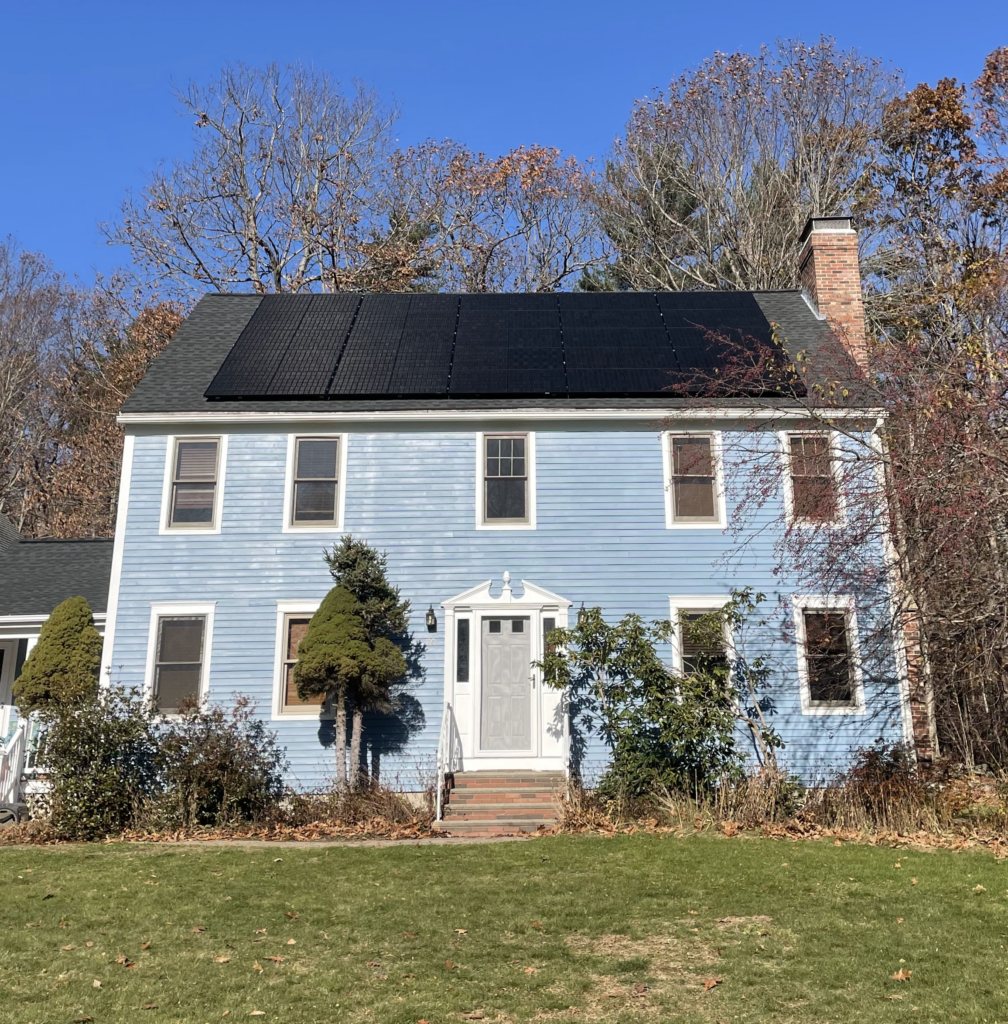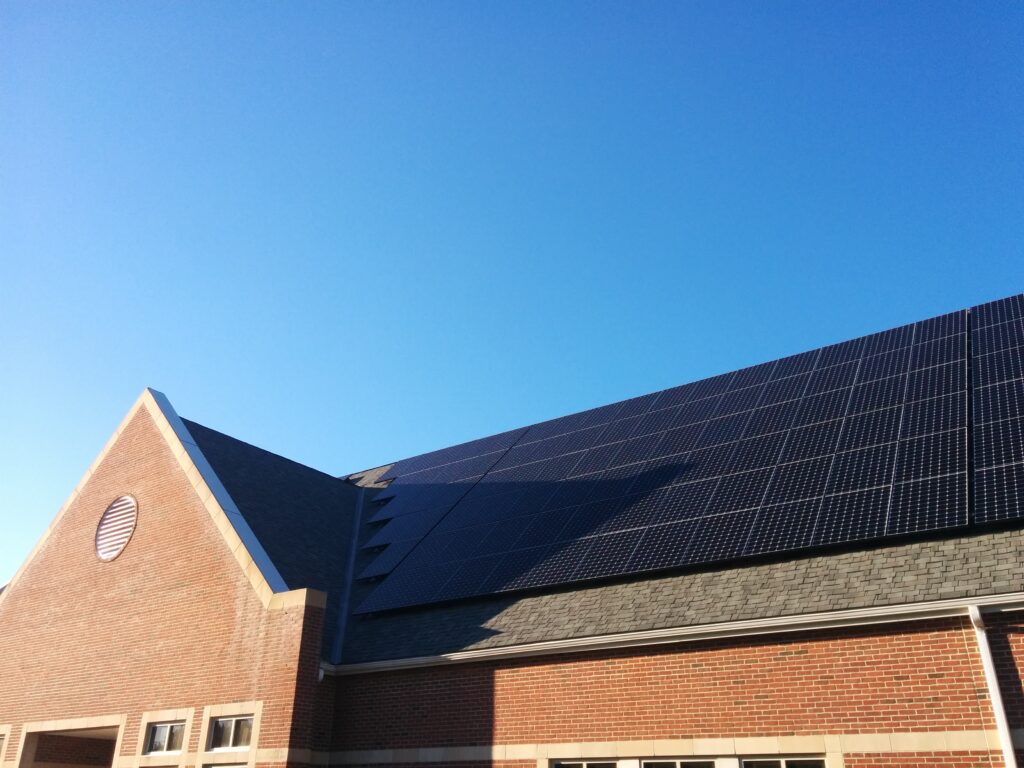Throughout the year, our team worked diligently to install new solar panel and battery systems, provide maintenance services, and serve customers across Massachusetts, Rhode Island, New Hampshire and Maine.
Our solar energy clientele includes a diverse range of customers, from commercial entities, nonprofit organizations, to our large base of residential homeowners. Let’s delve into the details of our work and the impact we have made in terms of energy savings, environmental benefits, and community support.
Solar Service in New England:
In 2023 we handled over 550 solar and battery service calls, with approximately 1/3 of them via simple phone support and rest as actual truck rolls. More exciting is the fact that much of that growth over the year has been generated via service to “orphaned systems”, meaning systems we didn’t install but were instead built by installers that have since gone out of business. The growth has allowed us to add a second service truck and service team, which has helped us keep scheduling delays to a more reasonable timetable. But our goal is to help even more solar adopters, so if you or a friend need service, be sure to give us a call. Issues can range from an old inverter that won’t kick on, a few panels that are not working, or perhaps mishaps like a fallen tree branch or other “acts of god”. We’re always here to help. 
Solar Installations:
In 2023, our solar installations covered a wide range of solar-powered systems throughout our territory as our volume of installations continues to grow year over year. The systems vary in size from 2.5 kW to 207 kW, with the median system size around 8-9 kW. Everything we build features high-quality components, including the LG Home 8 and Enphase solar batteries, REC and Qcells panels, as well as Enphase micro inverters.
State Rankings and Solar Adoption:
According to the Solar Energy Industries Association (SEIA) report in 2023, the states in our region, namely Massachusetts, Rhode Island, New Hampshire, and Maine, ranked 27th, 36th, 39th, and 18th respectively for the percentage of state electricity derived from solar sources. Across these four states, an estimated 1,125,720 solar installations have been implemented, accounting for 45% of all new electricity-generating capacity added to the US grid. We are super happy to have done our part.
From our own data, we successfully installed approximately 213 new solar systems this year (with batteries or without) across MA, RI, NH, AND ME – contributing to the ongoing growth of solar adoption in the region.
Energy Savings:
The size and design of solar installations are tailored to meet each customer’s specific needs. For example, using our estimator, let’s estimate first-year savings based on an example proposal for an 8.5 kW system. According to our estimator, an 8.5 kW system can save you around $3,000 annually. Extrapolating this figure to the 213 customers who have gone solar, we estimate a total savings of approximately $639,000.
Considering the 25+ year lifespan of our solar systems, an 8.5 kW system can save you around $75,000, with this year’s solar customers accumulating savings of approximately $15.98 million over the system’s lifespan.
Additionally, customers can take advantage of incentives like the 30% federal solar Investment Tax Credit to further enhance their savings. For more details on eligibility and specific incentives available in Massachusetts, Rhode Island, New Hampshire, and Maine please refer to our state-specific blog posts or check out our latest deals.
Environmental Impact:
Installing solar panels not only helps customers save on their electricity bills but also contributes to a cleaner environment. Many of our customers prioritize solar installations for their environmental benefits. To put these benefits into perspective, we can equate the carbon offset provided by solar systems to the efforts of trees.
According to a past article of ours titled “Tree Math 2: Solar vs. Trees, What’s the Carbon Trade-off?” 1kWh hour of fossil fuel generated electricity produces around 1.106 pounds of CO2 Conversely, a tree absorbs about 31 pounds of carbon dioxide each year. And of course, a kW hour produced by a solar system, generates zero CO2. Let’s look at how that works out for our work in 2023.
We’ll use those numbers and an average 6kW system:
- A typical 6 kW solar system will make around 8,000 kwH a year.
- Using 1.106 lbs of CO2 per kW hour as the offset, our solar system prevents the release of roughly 8,848 0 pounds of CO2 each year (or what 285 trees would absorb in the same time frame).
- If we multiply that across the 213 systems we installed in 2023, the cumulative carbon offset for the year totals roughly 1.88 million pounds of CO2 and 47.11 million pounds of CO2 over these systems’ 25-year life span
- Or in tree terms – the equivalent offset of 1.5 million trees
- And in truth our average system is closer to 8 kW and probably produces a bit more than outlined above. In short, we’re pretty happy with that number for a year of work.
Community Engagement:
In 2023, New England Clean Energy continued its collaborative efforts with community-centric nonprofit organizations. We have previously partnered with the Westport River Watershed Alliance, Worcester Common Ground, as well as wildlife sanctuaries and parks. Notably, this year we installed a solar system at the Doctor Franklin Perkins School in Lancaster, MA.

By reducing electricity and operating costs, our solar-powered systems enable these organizations to reallocate funds towards projects that support their mission. They can serve their community without the burden of expensive electricity bills.
We are also a proud sponsor of the Ride to End Alzheimer’s New England for the second year in a row. If you’re thinking of riding, please consider joining our team. You can learn more about the ride here.
Looking back at 2023, we are proud of the impact we made in reducing our customers’ bills, offsetting significant amounts of carbon dioxide, and helping individuals and nonprofits achieve their solar aspirations. We aspire for solar energy to become a standard for every roof, making it accessible to all. As we look ahead to 2024, we anticipate even greater achievements.
If you’re curious about what solar can do for you in 2024, feel free to get an instant ballpark estimate from us at no cost. Join us in the transition towards a cleaner and more sustainable future.
If you liked this article, you may also like:
New Ebook! Your Solar Journey: From Installation to Energy Independence
Exploring the Cost of Solar Power in Maine: Is it Worth the Investment?
New England Clean Energy Highlighted in Builder+Architect Magazine!





2 Responses to “Another Year Under the Sun: Our 2023 in Review”
It’s truly inspiring to read about the impactful work your team has accomplished throughout the year! From installing solar panel and battery systems to providing maintenance services, your dedication to serving customers across New England shines through. The diverse range of clientele, including commercial entities, nonprofit organizations, and residential homeowners, underscores the breadth of your impact on energy savings, environmental benefits, and community support. Keep up the fantastic work, and here’s to another year of positive change under the sun!
Warm regards,
Thanks so much for this kind comment!
By submitting a comment you grant The Energy Miser a perpetual license to reproduce your words and name/web site in attribution. Inappropriate and irrelevant comments will be removed at an admin’s discretion. Your email is used for verification purposes only, it will never be shared.